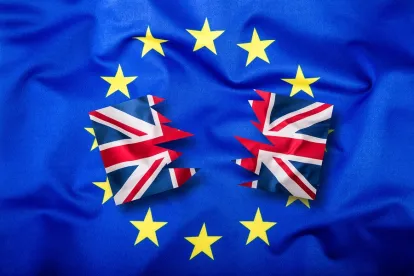The UK Parliament met on Saturday for the fourth time in the past century, on 19th October, to vote on the revised Withdrawal Agreement negotiated by the Prime Minister and his EU counterparts. The date mattered, because under the Benn Act the Prime Minister would have to seek an extension to the 31st October Brexit deadline unless Parliament had approved the deal by 19th October. In the event, the vote as such never happened. Instead, Parliament approved an amendment brought by one of the senior Conservatives expelled from the Parliamentary Party for supporting the Benn Act, Sir Oliver Letwin. The Letwin amendment was purportedly designed to prevent the risk of a “no deal” Brexit coming about between approval of the deal and 31st October – some major legislation has to get through Parliament before Brexit can legally happen, and if that legislation had failed to go through between 19th and 31st October, there would be a risk of an accidental “no deal” Brexit. By approving the Letwin amendment, Parliament postponed its approval of the deal until the legislation has passed, thus also triggering the requirement in the Benn Act for the Prime Minister to seek an extension to the Brexit deadline.
What’s the problem this time?
A recap on the revised deal: in many respects (including financial settlement, citizens’ rights, and an implementation period to Dec 2020 extendable for up to 2 years by mutual agreement during which there is little practical change) it is the same as the previous deal. The Prime Minister’s re-negotiation focused on the treatment of Northern Ireland – the so-called backstop was seen as the primary reason for Parliament’s emphatic rejection of the previous deal. In the new deal, the backstop is replaced by provisions which place Northern Ireland legally and constitutionally in the United Kingdom but for many practical purposes within the EU customs territory and single market (Schrödinger’s Province). The NI Devolved Assembly (Stormont) will have the opportunity to decide whether to continue the arrangement four years after the arrangement comes into effect. The underlying principle is that NI will be able both to remain part of the all-Ireland economy which has developed since the Good Friday Agreement in 1998, but also to benefit from Free Trade Agreements negotiated by the UK post-Brexit. As part of this re-negotiation, the legally binding “level playing field” regulatory alignment provisions of the former draft agreement have been loosened and moved into the political declaration about the future relationship between the EU and the UK.
The Northern Ireland Democratic Unionist Party (DUP), which has supported the Government through a confidence and supply agreement since the 2017 election deprived the Conservatives of their majority in Parliament, has reacted strongly to the creation of a new “frontier” between Great Britain and NI, and to the fact that the consent mechanism operates effectively by simple majority of Stormont – in other words, the DUP cannot by themselves ensure that NI leaves the arrangement foreseen in the new agreement. They fear that, over time, the NI economy will become more aligned with that of the Republic of Ireland, and less closely linked to Great Britain.
Extension to Article 50 timetable?
The Prime Minister duly sent the letter the Benn Act required him to send, seeking an extension of the Article 50 process until 31st January, but he sent an unsigned copy and simultaneously sent a (signed) letter making clear that the Benn Act letter was sent at the behest of Parliament and that the Government thought any further extension would be corrosive. At the time of writing, the signs are that the EU (extension requires a unanimous decision of EU Member States) will accept the Benn Act letter as an official extension request, but will not rush to a decision. The Government has announced its intention to press ahead with the legislation necessary to enable withdrawal with a view to maintaining the 31st October Brexit date. If it looks as though the Government can achieve that, the EU can leave the question of extension unanswered. If the Government looks to have the votes to get the legislation through, but the legislation is taking longer to get through Parliament, the EU may decide to agree to a shorter extension to allow the legislation to be enacted, and Brexit to take place with a delay of a month or so. If however it looks as though the Government cannot get the legislation through Parliament, the EU may decide on a longer extension (to 31st January or longer) to enable a re-set of British politics eg. through a general election. 28th November is reported to have been penciled in as a possible election date. It remains unlikely that the EU would decide to force a “no deal” Brexit.
Does the Government have the votes?
Analysis of the vote for the Letwin amendment suggests the votes might be there: any vote would certainly be close. Letwin himself along with some other former Conservative supporters of the amendment have already indicated that they will support the Government. So have the pro-Brexit Conservative European Research Group (ERG), who opposed Theresa May’s deal. The six Labour MPs from strongly pro-Brexit constituencies who supported the Government on the Letwin amendment are likely to vote for the legislation. The DUP have currently indicated that they will vote against, but might be persuaded at least to abstain. However, opposition parties will table amendments to the legislation, which could affect how other MPs vote as the Bill goes through the Parliamentary process. Among the amendments are likely to be one requiring the whole UK to remain in a customs union with the EU, and one requiring a referendum to approve the Brexit deal. It is not clear that either yet commands a majority in Parliament, but the votes could be close, and if either passes the ERG might find it hard to continue to support the legislation. Either way, a series of close votes are likely in Parliament over the coming weeks.
So where do we go from here?
It all depends on votes in Parliament (with a number of individual MPs facing very difficult choices), but the three most likely outcomes are:
- The Government passes the enabling legislation before 31st October and Brexit happens that day on the basis of the deal negotiated by the Prime Minister, or
- The Government passes the legislation but the Parliamentary processes take longer (the Government’s lack of majority makes imposing a timetable on Parliament harder), leading to a shorter extension to enable the legislation to be completed and the UK to leave the EU on the basis of the deal negotiated by the Prime Minister at some point before the end of the year, or
- The Government fails to secure Parliamentary support for the legislation, or the legislation is amended in such a way that it no longer implements the deal as negotiated by the Prime Minister, leading to a longer extension (to 31st January or longer) and a UK election.
A “no deal” Brexit on 31st October remains possible, but now looks very unlikely as it would require the EU to decide to refuse any extension and force a “no deal” Brexit.




 />i
/>i

